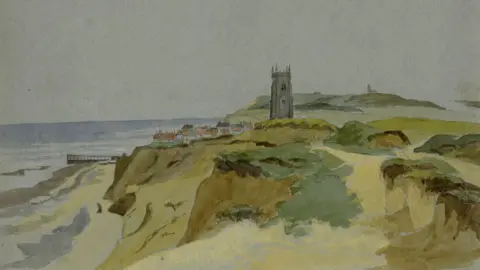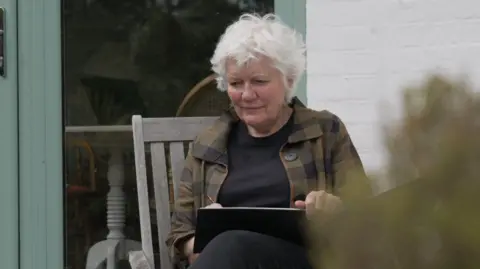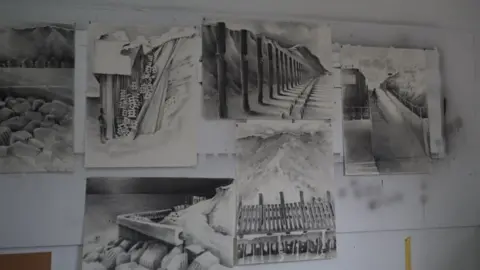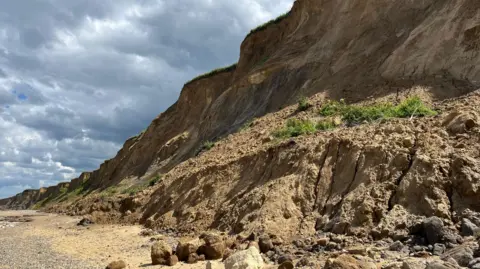Exhibition shows 200 years of coastal erosion
 Norfolk Museums Service
Norfolk Museums ServiceAn exhibition which shows how erosion has transformed a coastline over the last two centuries will open today.
Artist Jayne Ivimey has drawn Norfolk coastal scenes that were once painted by her great, great, great grandfather, James Stark - a member of the Norwich School of Artists.
He sketched and painted the Sheringham to Lowestoft coastline in the 1830s, decades before the first sea defences were constructed.
Ms Ivimey worked alongside a former climate research professor at the University of East Anglia (UEA) to discover why the landscape has changed so dramatically.
 Shaun Whitmore/BBC
Shaun Whitmore/BBC"There is so much cement holding this coast together, like a corset, it doesn't act naturally at all," she said.
"The dunes aren't able to move because they're all built on [which] has meant that the formation of the coast is vastly different to that of the 1800s."
Stark's pictures suggest that in the 1830s, the natural processes of waves, tides and sediment transport were shaping the Norfolk coastline through cliff erosion and beach accretion.
Since then, extensive sea defences have been built to protect parts of the coast.
 Shaun Whitmore/BBC
Shaun Whitmore/BBCAndrew Watkinson, emeritus professor at the UEA and a former director of the Tyndall Centre for Climate Change Research in Norwich, said sea level rises caused by climate change were likely to put coastal defences "under more threat" in future.
"We shouldn't have built right up to the coast in the first place," he said.
"We cannot put a wall up around the coast and hold the current line."
"We've got to work with nature, and the cliffs are just so important on our coastline in generating the sediments that feed the beaches. We have to allow them to breathe."
 Shaun Whitmore/BBC
Shaun Whitmore/BBCThe Sands of Time exhibition opens at Cromer Artspace at 11:00 BST on 11 July and runs until 22 July.
 Norfolk Museums Service
Norfolk Museums ServiceFollow Norfolk news on Facebook, Instagram and X. Got a story? Email [email protected] or WhatsApp us on 0800 169 1830
